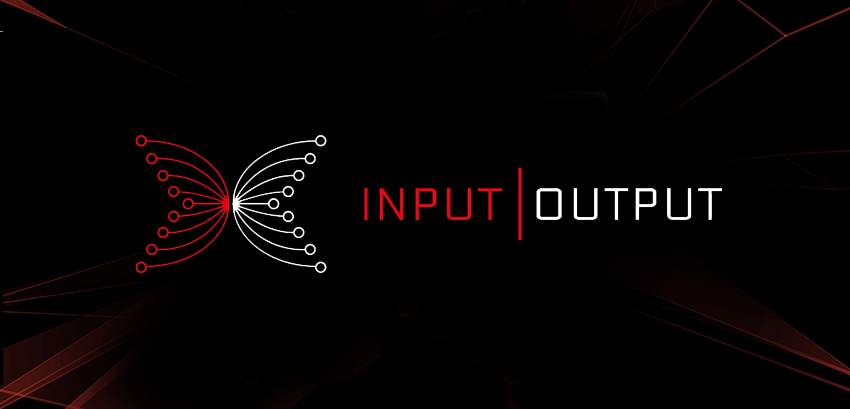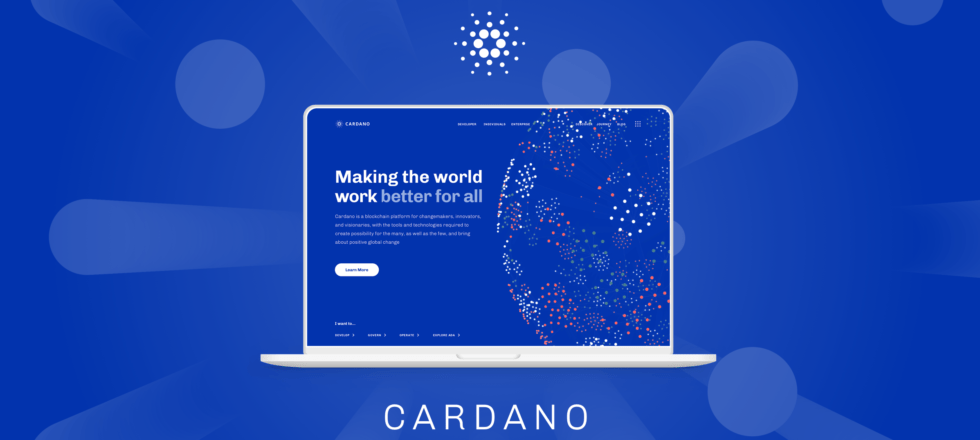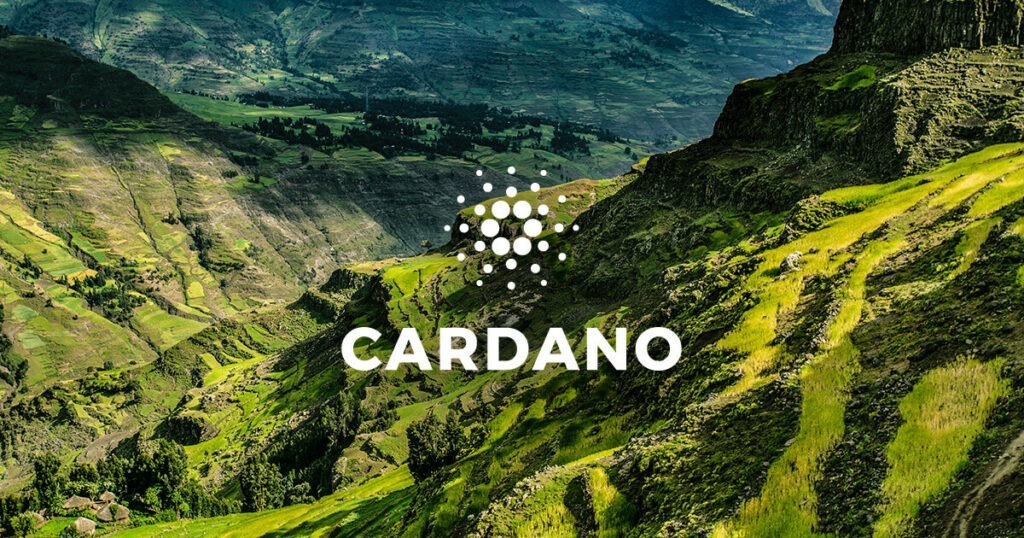We are honored to present the Cardano project with Romain Pellerin, technical director of IOHK, the company in charge of developing the project.
Could you introduce yourself to those who do not know you?
My name is Romain Pellerin, I’m the CTO of IOHK. I have a PhD in distributed computing and I’ve been working in the blockchain space since 2017. As CTO, I lead IOHK’s team of about 150 engineers building on IOHK’s products, from Cardano to Atala.
What is Cardano? What does it briefly consist of?
Cardano is a third-generation, proof of stake blockchain platform, and is the first of its kind to be based on peer-reviewed academic research and developed through evidence-based methods.
We chose this approach as robustness and security are the key characteristics for building an open financial operating system. Third-generation blockchains also aim to solve the problems of the previous two generations, namely costs, energy efficiency and scalability.
In summary, Cardano is a provably-secure, robust and sustainable blockchain. Our aim with Cardano is to democratise access to opportunities. This means creating a global system where everyone has access to the same financial and social services, whether they are a farmer in Somalia or a CEO in Silicon Valley.
IOHK’s vision is to enable a more democratic, equitable society so all people have economic inclusion. 1.7 billion people in the world are currently disconnected from the financial system because their identities can’t be verified – IOHK’s ultimate goal is to solve this problem.
Cardano is now the third most capitalised project in the crypto ecosystem. How does it differ from other blockchains?
Since the beginning, we have focused on peer-reviewed academic research and evidence-based methods. As mentioned previously, Cardano is robust, secure and sustainable. It holds a very unique position in the crypto industry.
As a matter of fact, we have supported, authored and co-authored 102 research papers to date. We took this approach to ensure the security and robustness of the platform as well as preparing an ambitious roadmap to address the main pain points of our industry, in particular quantum-resistance, scalability, interoperability, accessibility and governance.
At IOHK, we don’t believe that there will be ‘one blockchain to rule them all’ – we believe that in order for the blockchain space to grow as a whole, blockchains need to work together.
As a result, Cardano was built with interoperability in mind, and a lot of our work is focused on ensuring that blockchain platforms can effectively work with each other. This will allow the industry to have its ‘bluetooth moment’, where users won’t have to lock themselves into a single blockchain system, but can have a seamless, interoperable experience across platforms.
Many people compare Cardano to Ethereum. How is your approach significantly different?
There’s a clear difference in how Cardano and Ethereum address the design, implementation and maintenance of their system.
Cardano is focused on methodical research and formal verification of its implementation and opinionated roadmap while Ethereum is more experimental and disruptive, implementing a ‘move fast and break things’ approach to building.
An illustration for this is the way Ethereum decided to move from Proof-Of-Work (PoW) to Proof-Of-Stake (PoS) and how it came as a surprise for mining operators who will have to leave the ecosystem for another. Cardano chose PoS from the get-go and introduced the first provably-secure PoS blockchain protocol, Ouroboros, published in 2016.
Cardano had an opinion about how blockchain protocols should operate in order to solve some of the fundamental problems associated with blockchain technology, taking the time to conduct research to find provable solutions for problems with first and second generation blockchains such as high fees, scalability and energy consumption.
Also, second-generation blockchains like Ethereum built on the first generation by introducing smart contracts, but there is still some way to go when it comes to key issues like scalability, energy efficiency and costs.
Third-generation blockchains aim to address this. For Cardano, we’ve developed a scalability protocol in which each user who connects to the network generates ‘heads’, high-speed channels between a set of participants , which are throughput lanes for data and transactions.
Because of that, the system will get faster and decrease its latency as it scales. The Cardano platform will shortly incorporate a planned upgrade that will see the platform able to handle around a thousand transactions per second, and could scale comfortably past the capacity of global payment systems like Visa.
Proof of Work is currently being heavily criticised for being slow and energy-consuming. How would the Proof of Stake consensus protocol solve all these problems? Can Cardano be called an “ecological” blockchain?
Proof of Work (PoW) systems like Bitcoin validate all its transactions through Bitcoin miners using computing power to compete to solve random, complex cryptographic puzzles, with the first to solve the puzzle earning the right to validate the next block of data.
This process is very energy-intensive, as the competition adds more and more computational power to win a block, this electricity used in that computing race essentially being ‘thrown away’.
PoW systems are inherently energy inefficient, and this will only worsen as the system grows in number of participants; the more competition for the currency, the higher the energy consumption.
Energy consumption was a key consideration for IOHK from the start. That’s why we pioneered and developed the Proof of Stake (PoS) consensus mechanism, publishing the world’s first provably-secure consensus protocol that does not rely on computational power but stake of the participants in the system to determine block validators.
In fact, in PoS, the block production is assigned based on how many coins a person holds and manages, not how much computational power they aggregate.
With our protocol Ouroboros, the entire global Cardano network only uses the energy equivalent of a single family home. This is less than 0.01% of the energy consumed by the Bitcoin’s network, which currently uses more energy than the country of Argentina.
If you wish, could you share with us your feelings about the current crypto market? What will the future of Cardano consist of?
Block production on Cardano became completely decentralized in March of this year, and we’re expecting full smart contract functionality on the mainnet in the coming months*, after starting rolling-out programmability last year with metadata, tokens and NFT support last year and earlier this year.
We’re continuing to expand our ecosystem, and are working towards full decentralization later in the year. Following our partnership with the Ethiopian Ministry of Education to create digital IDs for students based on Atala Prism, we’re also continuing our work to level up the developing world.
Atala Prism will enable the Ministry to create tamper-proof records of educational performance across 3,500 schools, 5 million students, and 750,000 teachers, boosting education and employment nationwide.
IO is more focused on utility than the state of the market. However, the current state of the crypto market is a testament to how the industry is becoming more mainstream than ever.
We’re seeing more governments exploring blockchain, from the Bank of England’s research into CBDCs to the EU’s digital identity work, and our own partnership in Ethiopia. Institutional and government adoption is a huge step for the industry, and we’re only going to see more of this in the coming months.
IO will continue to focus on building partnerships and bridges with other crypto ecosystems, pushing for a more collaborative industry, in order to accelerate and simplify the onboarding of new users, enterprises and governments worldwide.
Interoperability and common standards definition are key elements of this initiative for the users to be able to leverage the capabilities of different networks.
Thanks for your answers Romain!
You can find IOHK on Twitter, as well as on their official website.
*The interview was conducted before the deployment of smart contracts on Cardano.





